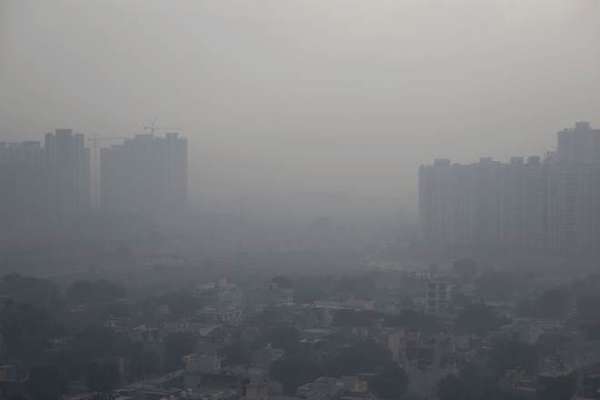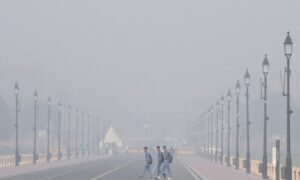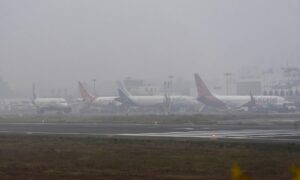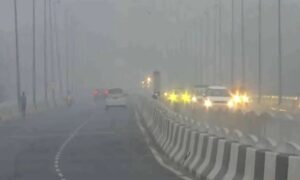
Representational Image
With the pollution level entering “severe-plus emergency” category or ten times the permissible limit due to rampant bursting of firecrackers in gross violation of a Supreme Court order, Delhi recorded its worst air quality of the year the morning after Diwali.
The areas where the violations were recorded included Mayur Vihar Extension, Lajpat Nagar, Lutyens’ Delhi, IP extension, Dwarka and Noida Sector 78, according to a report.
The Delhi Police said it had registered over 550 cases and arrested over 300 people for violating apex court’s order in this regard, while asserting that on Diwali day, it also seized 2,776kg of firecrackers, arrested 87 people and registered 72 cases in connection with illegal sale of firecrackers.
The Delhi Fire Services (DFS) responded to over 300 calls on fire incidents triggered by firecrackers and LPG cylinder blast, among others, on Diwali night in Delhi, including an incident in which two children lost their lives and two others were injured. This, they said was much higher than previous years. Over 250 cases of burn injuries were reported by various hospitals in the national capital this Diwali.
The Supreme Court had allowed people to burst firecrackers from 8pm to 10pm only on Diwali and other festivals. The top court also allowed manufacture and sale of just “green crackers” which have low emission of light, sound and harmful chemicals. The court said the police should ensure there was no sale of banned firecrackers and in case of any violation, the Station House Officer (SHO) of the police station of the area would be held personally liable and this would amount to committing contempt of court.
But despite the Supreme Court’s order, certain places recorded violations where firecrackers were burnt before and after the set time frame.
Partly as a result of smoke from the firecrackers, the overall air quality index (AQI) in Delhi jumped to 574 which falls in the “severe-plus emergency” category, according to data by the centre-run SAFAR (System of Air Quality and Weather Forecasting And Research).
A “severe plus emergency” AQI essentially means that even healthy people could suffer from respiratory illnesses like asthma on prolonged exposure.


















